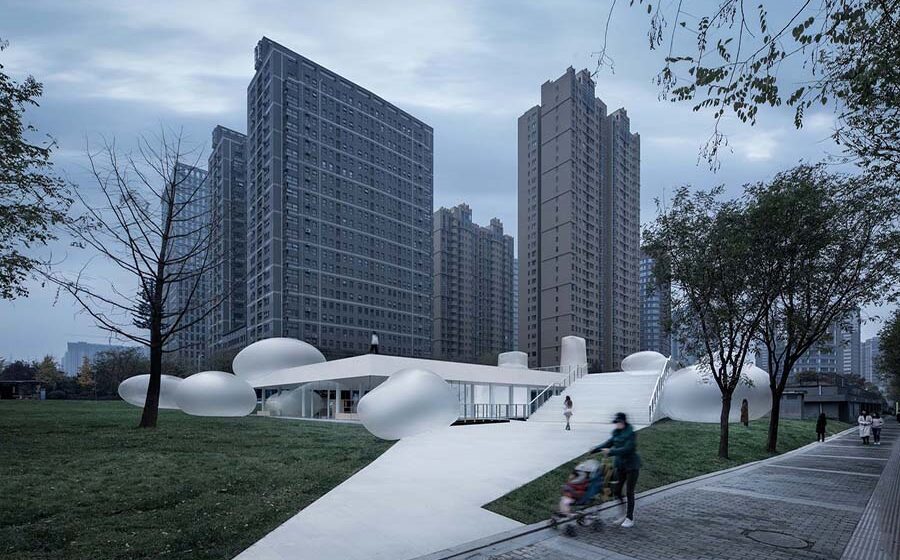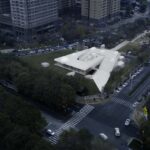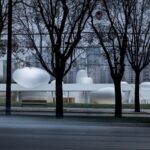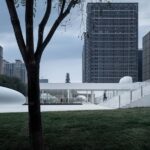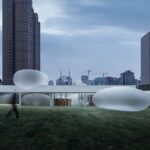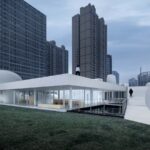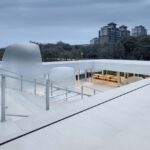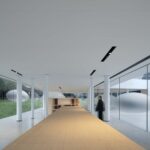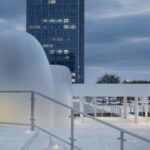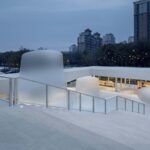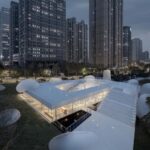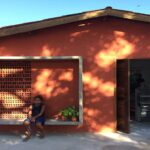Urban Transformation Approaches
Updating a city can be approached through comprehensive renovation, functional change, or demolition and reconstruction. The Cheng Dong project aims to create a functional building that revitalizes the regional identity of a city. The focus is on enhancing urban public spaces to provide a relaxed and comfortable experience for residents, rather than pursuing extreme aesthetics which can be costly and time-consuming. Artistic elements are incorporated to observe the interactions between people and the city, turning the project itself into an experiment. Over 40 days, observations were made on how residents, particularly the elderly and children, interacted with the space, highlighting the need for projects that foster positive community interactions.
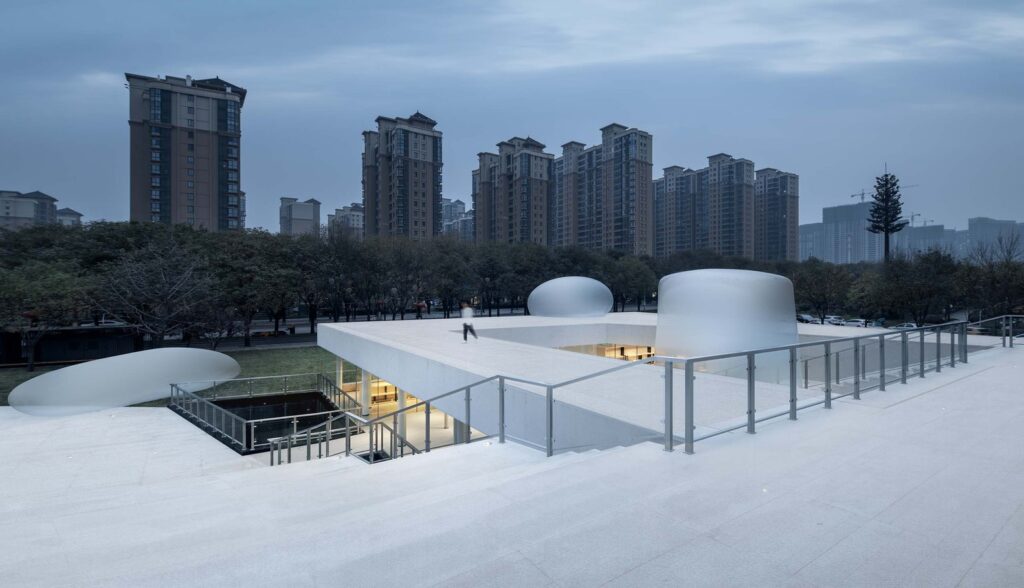
Project Background and Objectives
Located in Qujiang New District, Xi’an, China, the project site was initially intended for a square and urban landscaping with a two-story parking lot underneath. Surrounded by urban roads, the area was later covered with soil and is now bordered by office buildings and residential communities. Inspired by Kevin Lynch’s concept of “the image of the city,” which includes roads, borders, regions, nodes, and landmarks, Cheng Dong combines public space with artistic architecture. This project has not only become a community landmark but also a shared urban image among residents. The goal is to create a humanized public space that prevents social isolation and enriches urban life.

Design Philosophy and Social Impact
Over the past 60 years, public space design has evolved, requiring designers to adopt a higher perspective on urban patterns. Buildings can address social deficiencies by considering social conditions, creating spaces that truly understand and prioritize people. The Cheng Dong project emphasizes reasonable care and deep perception of life, moving away from politically correct but impersonal public spaces. In a city rich with historical culture, practical, personalized, and thought-provoking buildings are rare. Meaningful public spaces must be discussed within a broader social context and withstand the test of time and capital, with a focus on people’s needs.

No. 12 Public Building
No. 12 public building, a renovation project by designer GU Teng, stands out amidst the towering office buildings and residences of the Third Ring Road’s south area. With a transparent lower section, a half-open roof, and an upper part floating in the air, the building creates a unique, weightless feeling. The design blurs the lines between inside and outside spaces, offering a seamless transition for visitors. The structure includes a stepped platform extending to an open-air area, connecting previously fragmented spaces and integrating the streets, central park, and underground parking lot. This design eliminates architectural boundaries, allowing people to move freely and creating a cohesive urban space.
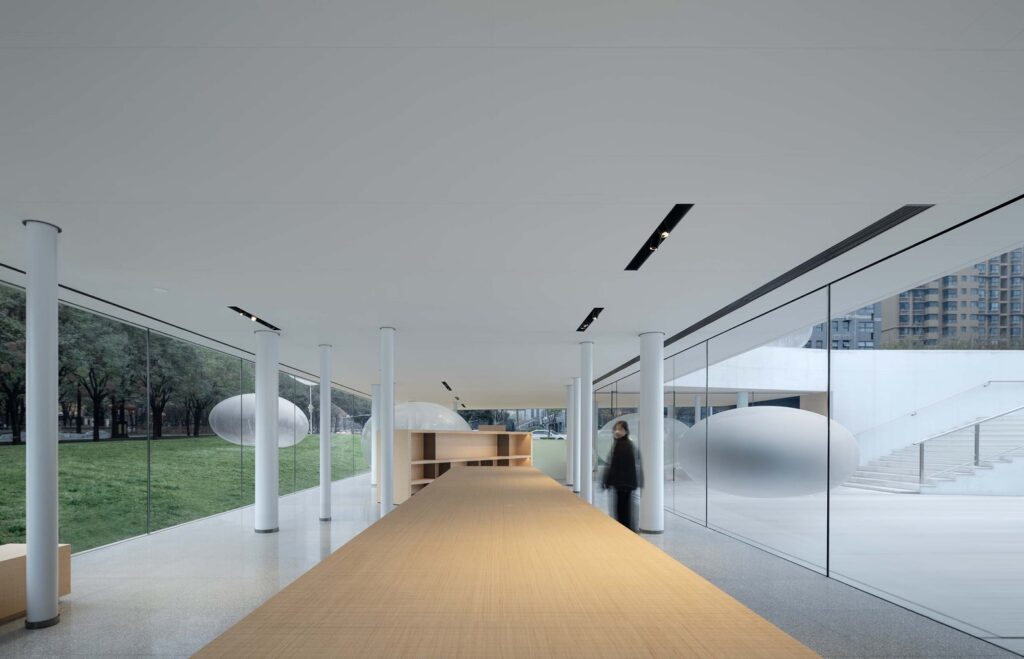
Human-Centered Design and Interaction
GU Teng’s design philosophy prioritizes simplicity and harmony with the surrounding environment. Unlike eye-catching architectural styles, his approach is more understated, emphasizing the importance of subtraction and avoiding excessive visual complexity. Passing through the building, visitors experience a comfortable, natural space that inspires imagination and fun. According to Hannah Arendt’s “The Human Condition,” cities should facilitate connections among people beyond age, experience, and boundaries. The design respects the vitality of the building, using existing rules and conditions to enhance the local urban lifestyle. The building’s function is paramount, integrating various aspects of urban life in a harmonious, vertical city.

Enhancing Urban Life and Interaction
Whether it’s Cheng Dong or No. 12 public building, GU Teng explores new opportunities for urban renewal in a modern historical context. By considering the shape of the ground and environmental space, the design encourages multi-layered interactions among people, nature, and society. Increased interaction stimulates natural flow and flux in the region, promoting the rational use of existing conditions to enhance urban liquidity. This approach leads to more space design and development, revealing new design concepts. Ultimately, architectural art can achieve its original purpose more easily and simply. As the city evolves, beloved neighborhoods become small islands of community, where life flows naturally guided by light and warmth, even in the colder seasons.

